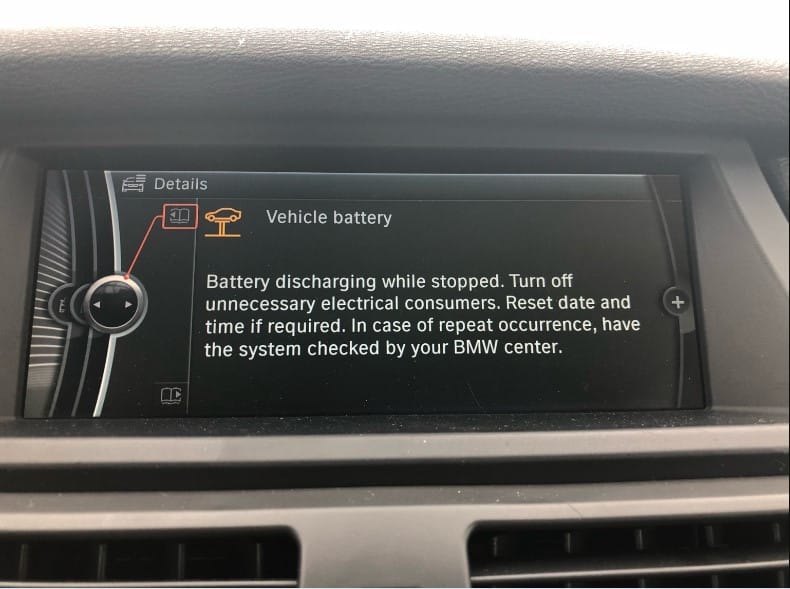Imagine embarking on an adventurous road trip, only to be greeted by an ominous battery discharge warning on your car’s dashboard. Panic sets in as you desperately search for a solution to avoid being stranded in the wilderness. Fortunately, understanding the causes and practical steps to resolve battery discharge warnings can empower you with the knowledge to handle such situations with ease.

Image: www.richsautobodyshop.com
Deciphering the Battery Discharge Warning
When the dreaded battery discharge warning illuminates your dashboard, it signals that your car’s electrical system is experiencing an imbalance between energy demand and supply. Typically, a healthy battery and charging system generate sufficient power to meet the electrical needs of the vehicle without any discharge warnings. However, certain factors can disrupt this delicate balance, causing the battery to discharge prematurely.
Causes of Battery Discharge
Identifying the underlying cause of battery discharge is crucial for finding an effective solution. Common culprits include:
-
Faulty alternator: The alternator, a vital component in the charging system, is responsible for replenishing the battery’s power while the engine is running. A malfunctioning alternator fails to generate enough electricity, leading to battery discharge.
-
Weak battery: Over time, all batteries lose their capacity to hold a charge. A weak battery may struggle to provide sufficient power, especially when the vehicle’s electrical demands are high, such as during cold starts or when using power-hungry accessories.
-
Electrical issues: Electrical faults, such as parasitic battery drain caused by faulty wiring or malfunctioning components, can continuously draw power from the battery even when the vehicle is turned off.
Troubleshooting and Resolution
Resolving a battery discharge warning involves a systematic approach to diagnose and address the underlying cause. Here’s a step-by-step guide:

Image: batteryquery.com
1. Check Battery Condition
Start by assessing the condition of the battery. A visual inspection may reveal corrosion or swelling, indicating potential issues. Using a battery tester or voltmeter, you can determine if the battery is holding a sufficient charge.
2. Test the Alternator
With the engine running, use a voltmeter to measure the voltage at the battery terminals. A normal reading should be around 13.5 to 14.5 volts. If the voltage is below or above this range, it could indicate alternator issues.
3. Inspect Electrical System
Examine electrical connections for loose or damaged wires. Look for any aftermarket accessories that may be draining excessive power. You can also perform a “parasitic drain test” to identify components drawing power when the vehicle is off.
4. Seek Professional Help
If your troubleshooting efforts do not resolve the battery discharge issue, it’s advisable to seek the assistance of a qualified mechanic. They have specialized diagnostic tools and expertise to accurately identify and repair electrical problems.
How To Fix Battery Discharge Warning
https://youtube.com/watch?v=jZlk-yqvFgU
Prevention and Maintenance
To minimize the risk of battery discharge warnings, implementing preventive measures is essential:
-
Regular Battery Checks: Periodically inspect the battery for corrosion or damage. Clean the terminals and tighten loose connections as needed.
-
Alternator Maintenance: Pay attention to signs of alternator issues, such as flickering lights or unusual noises. Have the alternator checked and serviced regularly.
-
Avoid Parasitic Drains: Minimizing electrical drain when the vehicle is off conserves battery power. Ensure all lights are switched off, accessories are unplugged, and any faulty components are repaired.
-
Consider a Battery Charger: If you infrequently use your vehicle or store it for extended periods, investing in a battery charger can prevent discharge.
Remember, adhering to these guidelines can prolong battery life and ensure a reliable electrical system for your vehicle, giving you peace of mind on every journey.